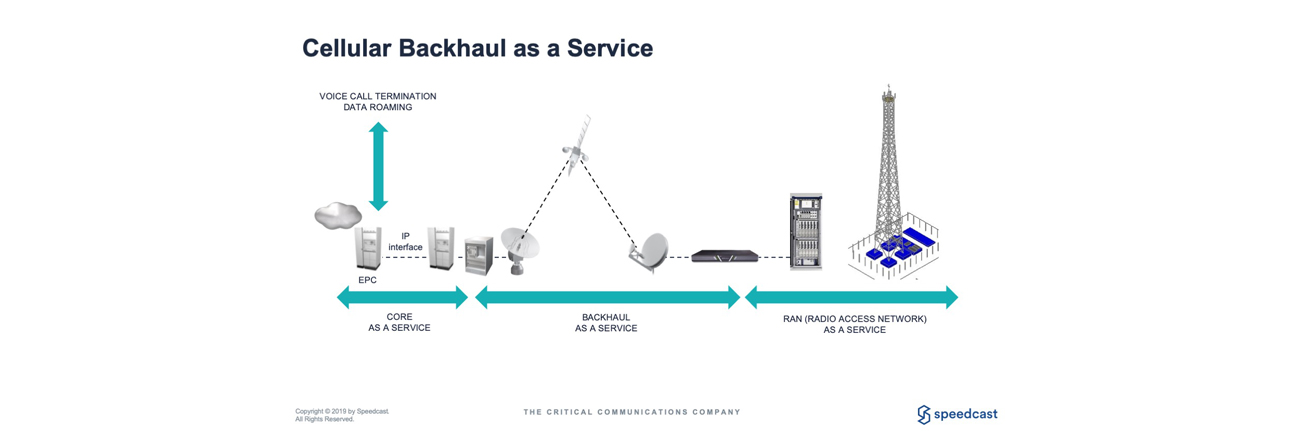We spoke with David Bunting, Director of Product Management at Speedcast, about the opportunities and challenges for satellite service providers to grow their businesses in the cellular backhaul space.
iDirect: What is the opportunity today for satellite to support mobile?
Bunting: Mobile operators are actively searching beyond their core markets to expand into remote and rural areas where there is significant opportunity for new service subscribers. Cellular backhaul over satellite can offer a lower cost solution than terrestrial and microwave expansion.
To create an even more solid and diverse market opportunity, the remote customer profile is changing. Those who need to be connected will be coming online not just with basic voice needs, but with data needs. When the other half of the world comes online, they want the same service the rest of the world enjoys. In fact, the Internet for them is the key to build their local economies and improve their societies.
According to NSR, broadband opportunities are taking off and will drive the biggest opportunities moving forward. In fact, NSR finds that bandwidth requirements are growing at 31.2 percent CAGR and likely to surpass 4 Tbps by 2028. Data services in general will also lead to better profit margins for mobile operators.
We are also seeing some key emerging opportunities for satellite service providers in the mobile network space including emergency backup to terrestrial networks, offloading capacity in the event of a surge in data demand, and sending data via satellite multi-cast to many endpoints simultaneously.
iDirect: How is satellite technology evolving to support this expanded opportunity?
Bunting: There are several trends that are making a major difference today and will make an even bigger impact in the coming years. With High Throughput Satellites (HTS), the price of satellite capacity has dropped exponentially and is projected to decrease further. LEO satellites will significantly reduce latency to improve quality for voice services. In parallel, satellite terminal costs have sharply decreased, while data rate performance has dramatically improved.
The advancement of network optimization and virtualization technologies increases both data and operational efficiencies. All these factors are combining to lower mobile operator costs to a point where the remote and rural market now appears financially viable for 2G, 3G, 4G and even 5G networks.
iDirect: What challenges are being placed on mobile operators to adopt these innovations?
Bunting: While global opportunity abounds, developing financially viable solutions based on diverse market requirements and distinct skill sets presents a steep challenge for mobile operators. Satellite networks require major capital expenditure (CAPEX) and operational expenditure (OPEX) investments and specialized network expertise. Many mobile operators are looking to new financially attractive managed service offerings to lower their risks and speed their go-to-market activities.
iDirect: How does Speedcast help address this situation?
Bunting: At Speedcast, we want to help mobile network operators capitalize on the massive opportunity in front of them. In order to provide mobile operators with an affordable and easy-to-manage cellular backhaul solution over satellites, Speedcast is a proponent of cellular backhaul as an end-to-end managed service, wherein a specialized solutions provider takes care of everything including designing, purchasing, installing, configuring, managing, monitoring, analyzing and optimizing all the necessary parts of the solution.
iDirect: How does Speedcast leverage the iDirect platform?
Bunting: Speedcast had deployed iDirect’s platform to meet customer challenges of high infrastructure costs to upgrade capacity on LTE cells, extend 2G/3G network coverage into rural and remote areas, RAN as a service, and provide passenger GSM roaming services onboard ferries and cruise ships. Whether fixed or mobile sites, Speedcast provides a managed service on the iDirect platform. The benefits to customers are many: lower cost compared to terrestrial infrastructure for remote cell sites, fully managed network allowing CIR per site as well as burst capacity from network pooled bandwidth, fast deployment, flexibility to quickly deploy new sites and bandwidth growth. For the maritime market satellite is the only option for connectivity to vessels operating offshore with a fully managed network allowing shared bandwidth allocation across vessels.
Additionally, an extremely comprehensive suite of Quality of Service (QoS) configuration tools available on the iDirect platform allow us to give our customers the benefits of burst and committed rates as described above, to ensure that critical services, such as voice, are always prioritized and allocated Committed Information Rate (CIR) over standard internet access services which can benefit from burstable capacity.
iDirect’s efficient satellite platform allows us to cost effectively manage a multitude of small, medium or large networks. With the iDirect modular hub design, we are able to quickly launch and then scale effectively as requirements change.
Speedcast has been a long-time iDirect partner and we are proud to support them. Visit the Speedcast website for more information on their solutions.
And, watch our new on-demand cellular backhaul webcast to learn more about mobile backhaul trends and solutions for 3G/4G/LTE and how you can reach new markets and deliver cost-effective solutions to your customers.
